I remember first traveling to Buenos Aires, Argentina's capital. For four days, our breakfast was Argentinian Medialunas and a coffee. They are also the perfect mid-afternoon snack. They are widely popular and always available in Argentina. They have also been adopted in Chile, my home country.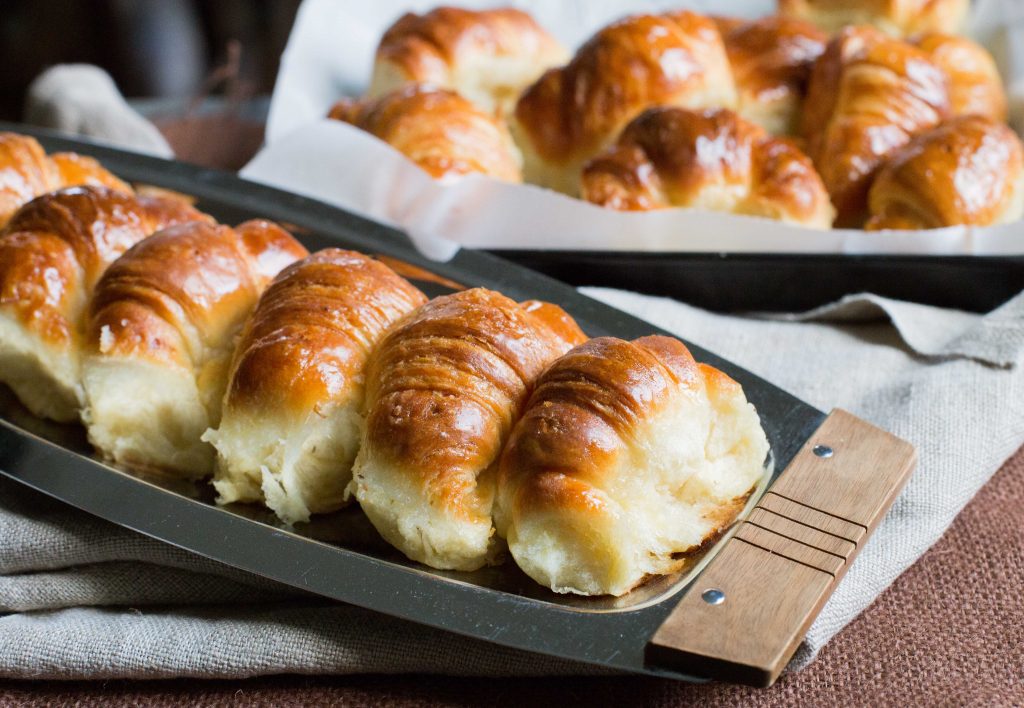
Are croissants and Medialunas the same?
No, Medialunas are between a brioche and a croissant. They are made with a sweet, enriched (eggs and butter) dough with many layers and a subtle hint of lemon and vanilla. The sweetness is restrained.
Medialunas are a little challenging to make but fabulous to eat. They can be frozen and popped in the microwave or toaster for a real treat. Don't forget to try them if you ever go to Argentina.
I recommend using European-style butter in this recipe (higher in fat, 82% or more) for better taste.
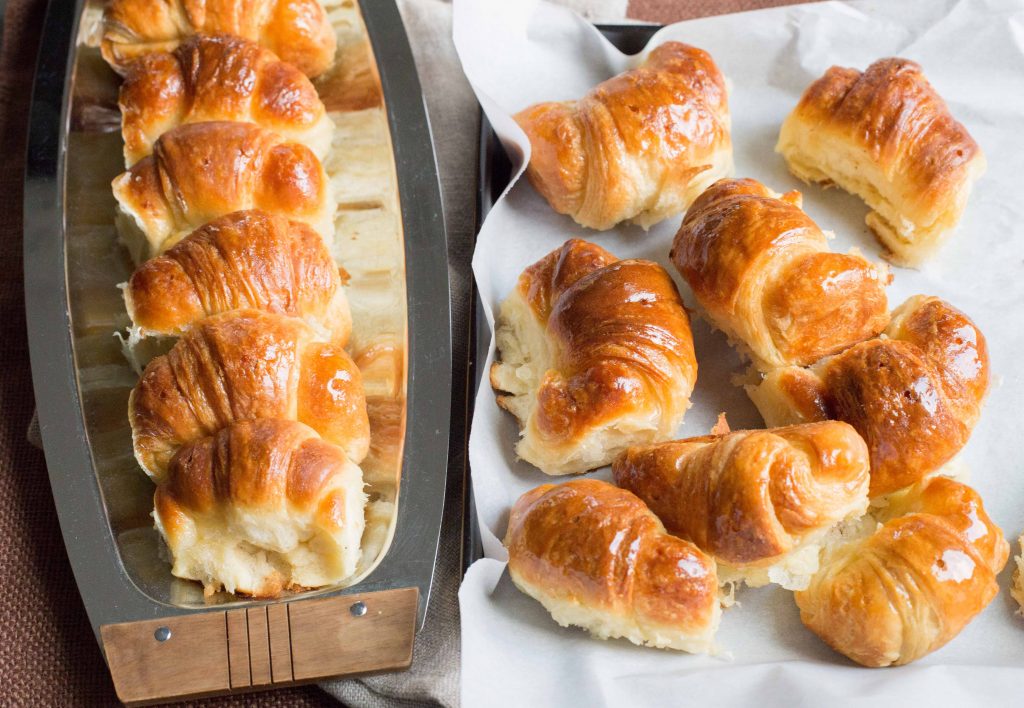

Argentinian Medialunas
- Prep Time: 5 hours (2 h. active time)
- Cook Time: 30 minutes
- Total Time: 5 hours, 30 minutes
- Yield: 18
- Category: Sweets
- Method: Baked
- Cuisine: Argentinian
Description
A traditional recipe for Argentinian Medialunas or sweet croissants.
Ingredients
PLEASE USE THE METRIC MEASUREMENTS
for the dough,
- 300 ml. of whole milk
- 14 grams (2 envelopes) of active yeast
- 525 grams of all-purpose flour
- 40 grams of sugar
- 15 grams of honey
- 1 teaspoon of vanilla extract
- 1 teaspoon of lemon zest, optional
- 10 grams of salt
- 2 eggs (1 for the dough and 1 for the brush)
for the butter layers,
- 40 grams of all-purpose flour
- 225 grams of European-style butter, at room temperature (Plugra works well)
for the syrup,
- ½ cup of water
- ½ cup of sugar
Instructions
- Warm the milk; it should not be more than 110F or 43C. Add the yeast and stir until dissolved. Let stand for 10 minutes; it should form abundant bubbles. If you do not see bubbles, repeat the process and make sure that the yeast is alive.
- With a fork, mix the butter with the 40 grams of flour and spread over parchment paper, give it a square shape of about 6" per side. Refrigerate for at least 15 minutes.
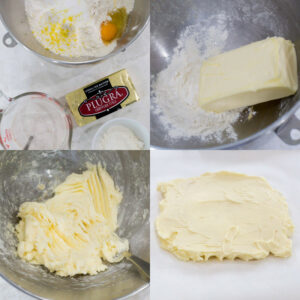
- Place the flour, sugar, honey, vanilla extract, lemon, salt, and one egg in a bowl. Using the paddle attachment, mix everything while adding the milk with the yeast. Work to form a sticky dough for about 5 minutes. Change to the kneading hook and knead for 10 minutes at a low speed.
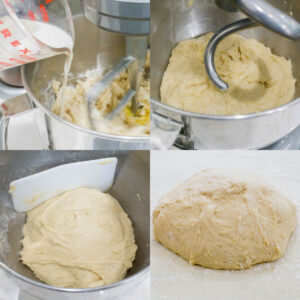
- Place the dough on a floured board. Stretch the dough into a square of about 12" per side, place the square of butter in the center, and fold the dough to cover the square of butter. Pinch to seal the edges of the dough. Roll without exposing the butter into a rectangle. Fold in 3 as a letter, the left side first. Place in a floured tin and refrigerate for 1 hour.
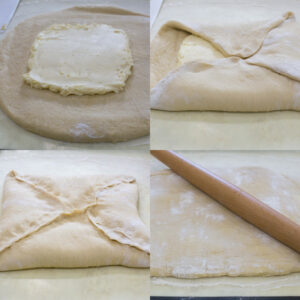
- Remove the dough from the floured board and place it with the longest side in front of you. Extend to form a rectangle and fold again in 3, always on the left side first. Refrigerate for 30 minutes. Repeat this process two more times. After the four times doing the folding, don't refrigerate. Move to the next step.
- Stretch the dough on the floured counter into a rectangle of 45 x 30 cm (18 "x 12") with a thickness of 5 mm. Cut so that the rectangle has straight edges. Cut three long strips of 4" wide each. Then, cut each one in 3, and then diagonally, you will get 18 triangles. Extend each triangle and roll up starting from the base. Guide yourself with the photos.
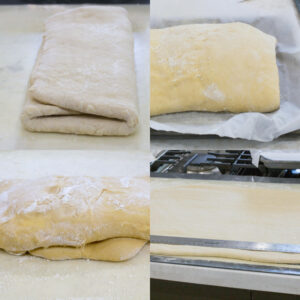
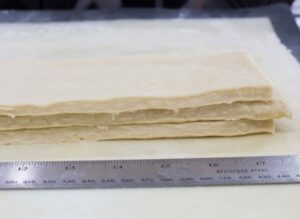
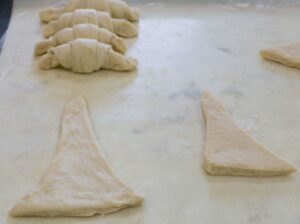
- Butter generously a quarter baking sheet. Place each roll in the sheet and give it a horn shape, pressing the tips into the baking sheet, place the next crescent almost touching the previous one, fill the tray.
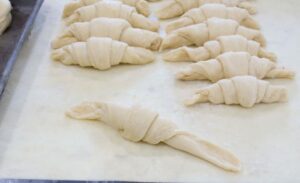
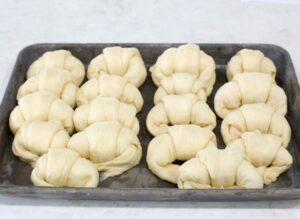
- Place the remaining egg and a little water or milk in a small bowl. Beat until fully incorporated.
- Preheat the oven to 350F or 180C.
- Leave the medialunas covered with a dishcloth in a warm place for 30-45 minutes; they should grow but not double in size.
- Brush with the egg mixture and bake for 30 minutes, rotating if necessary.
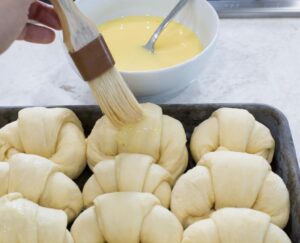
- Meanwhile, prepare the syrup. Place the water and sugar in a small pot. Cook over medium heat, stirring until the sugar dissolves. Let boil for 4 minutes to reduce.
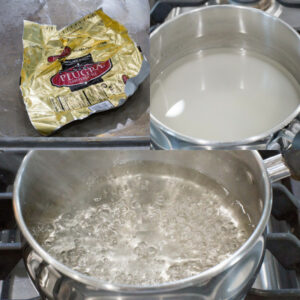
- Remove the medialunas from the oven; they must be well browned, prick with a toothpick in several parts, and brush with the syrup so that it is absorbed. Keep brushing until you use all the syrup.
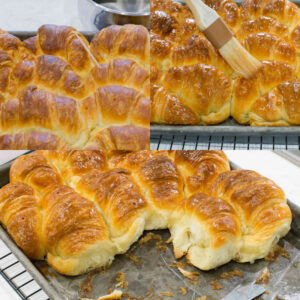
- Serve warm. They keep for three days. They can be frozen and reheated without problems.
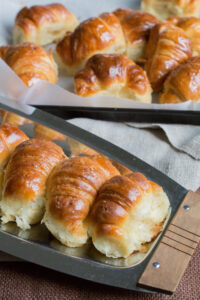
Nutrition
- Serving Size:
- Calories: 194
- Sugar: 7.1 g
- Sodium: 175.1 mg
- Fat: 8.7 g
- Saturated Fat: 5.1 g
- Carbohydrates: 25.2 g
- Fiber: 0.8 g
- Protein: 3.7 g
What is Facturas in Argentina?
Facturas is a unique Argentinian way to refer to Pan Dulces. Medialunas are a kind of factura.
Places to get Medialunas:
In Houston: Argentina Cafe
In Seattle: Boca Bakery, SeaTango Bakery
Leave a comment if you know of other Argentinian bakeries.
Other Argentinian recipes here.
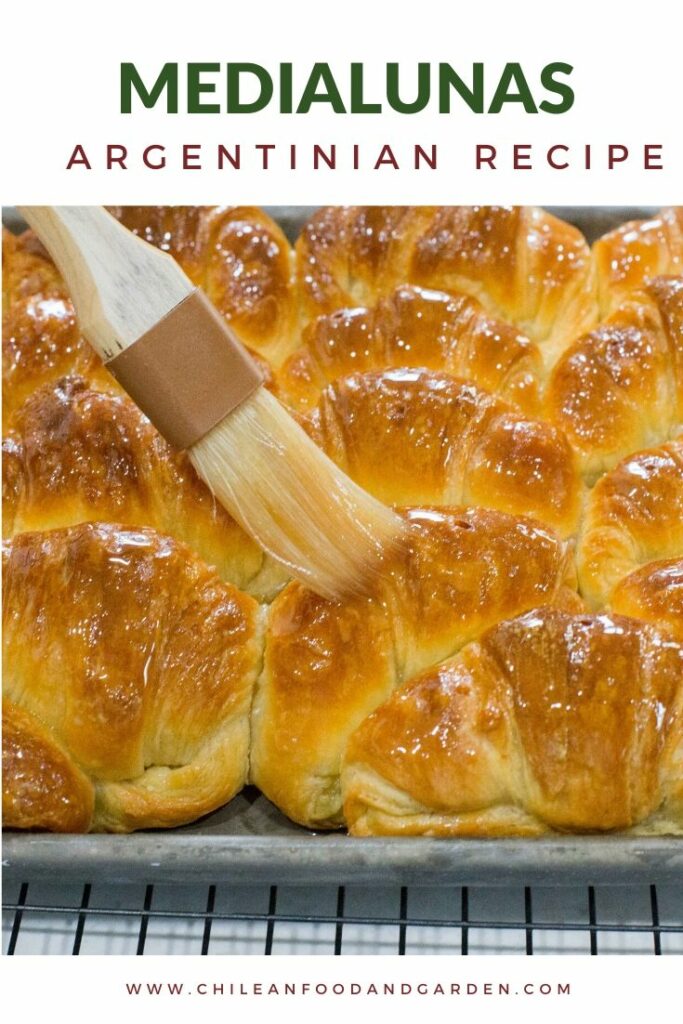
This recipe was sponsored by Plugrá® butter.

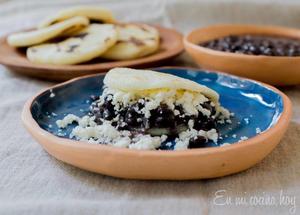
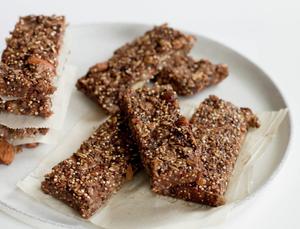
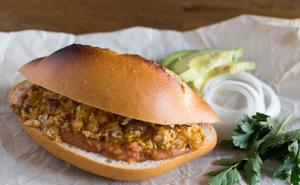
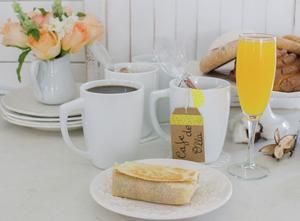
Anonymous says
Use only the metric option to view the ingredient measurements. The "US" option to view the measurements is way, way off. For example, 300 ml of milk does NOT equal 1 cup of milk. 300 ml of milk equal 1 and 1/4 cup of milk, which makes a big difference when you're making dough. This really messed me up and added a lot of time for me to figure this out. Also, this recipe takes a very long time to make, way more than 2 hours - you need to budget way more time for yourself to get it all done.
Pilar Hernandez says
When working with dough, always use metric measurements. The recipe card provides the US measurements but sometimes is not precise. I alerted the provider. I will add a note. Thanks.
The total time listed is 5 hours. It's a complex recipe.
I'm sorry you run into trouble. I hope you enjoy them in the end.
In Argentina, people buy medialuna. They are not made at home because of how time-consuming they are.
CC says
Your estimated time is really inaccurate- at least 20 minutes to assemble and knead; 1 hour for the first rest; 2 more 30 minute rests; 20 minutes to shape them; then 45 more minutes of rest; then 30 minutes of baking; 5 minutes to brush with glaze. Seems like a the very minimum it's a 4 hour process, not anywhere close to 2.5 hours. It would be helpful if you updated this so that we're aware of how much time is needed for this recipe. Just sharing the amount of time of "active" work isn't really helpful.
Pilar Hernandez says
I get what you are saying. But half the people prefer active time and half don't. I will put a note about it. Thanks.
Jen says
I love them my fiancé is Argentinien and he loves them I add in the syrup a little bit vanilla extract 😉the only thing I have sometimes problems is the dough when u need to put the butter and u need to fold but I was looking around in YouTube how to do it and today I made them and I didn’t had any problems with it at all I really love this recipe thank u
Pilar Hernandez says
Congrats, so happy you made them. Great idea with the vanilla.
Thanks for commenting.
Emily says
I think the prep time is off. It says 2 hours. There is 2 hours where the dough is in the fridge but that doesn't include making the dough or rolling. It's probably closer to 3 hours which still doesn't include the 30-45 minutes for proofing.
I also think the picture where the slab of butter is sitting on the dough isn't correct. In order for you to get the look of the next picture you have to put the butter at a diagonal.
Pilar Hernandez says
It's active work for around two hours. But it varies a lot depending on skill and experience.
About the picture: The orientation of the butter "brick" is correct; you pull the dough into the shape seeing in the picture.
Kaitlin Patterson says
Can’t wait to make! I love a new and delicious challenge! Making for a friend from Argentina - you mention in comments freezing and warming up in microwave/oven. Would you mind sharing how long and at what temperature you do this? Don’t want to ruin them! Thanks!
Can’t wait to write back how amazing they are! Stay tuned!
Pilar Hernandez says
It depends on the microwave, go slow and one at a time, don't do more than one. And it's for leftover, fresh warm from the oven is way better.